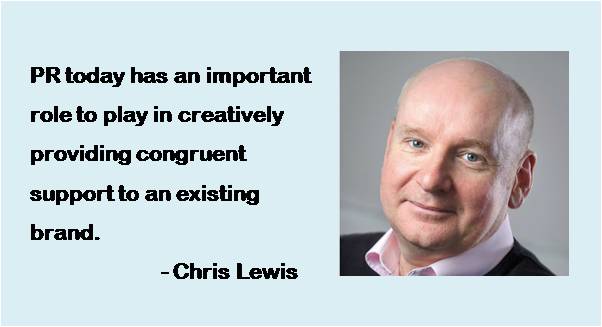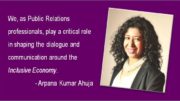There are rocks in the Aravalli Mountains which are among some of the oldest on earth. It’s difficult to believe they were once molten lava extruded from the ground like hot jam. Over the years, these enduring features have been eroded by the daily wind, sun and rain and eventually washed into the Rukmavati River which empties into the Gulf of Kutch and thereafter into the Arabian Sea.
Marketing and communications professionals might recognise metaphors in some of these processes. Brands, like great igneous upwellings, are created from deep within the bowels of companies. Designed to be enduring acts of creativity, they are then exposed to the ephemeral elements to be burnished or tarnished by the diurnal cycle.
The widening diversity that we’ve seen in digital channels has accelerated this process. This is a great opportunity for communicators because they become custodians of the brand on a day-to-day basis. Now that everything is connected digitally to everything else, the opportunities are almost endless for communicators.
Communications is becoming an even more critical element of the marketing mix because it deals with news. And news changes perceptions and that shifts value. Of all the mix elements, it’s the only one that can talk to the client every day of the week and twice on Sundays. News changes every 45 seconds. This is the cycle time for Twitter to refresh its servers. You’re now never more than 45 seconds away from someone knowing more about your brand than you do. This means that you not only need to be creative. You need to be fast, too.
You’ll be able to tell by now that I’m fond of metaphor. It is after all, the essence of creativity. So here’s another one. Our profession provides us with a shield and a sword. We need creativity to deploy both.
When we’re defending reputations, for instance, we need to understand what actually is a threat. This takes some imagination because not all threats should provoke a response. Sometimes, the correct response to a threat is ‘do nothing’. This requires judgment born of experience and imagination. We also need the same skills to recognise what could become a threat. This is where we must read widely and have the imagination and creativity to join the dots.
When we’re developing a brand we need the synthetic creative thinking.
How can we link it?
Who out there could make common cause with us?
Where are our ‘unpaid sales people’?
What do we dream that this brand could become?
What is its potential?
Creative vision is simply the ability to see what is currently invisible.
There’s nothing wrong with producing more engineers and scientists, but if they are going to improve things, they need some imagination to see how it could become better. Or much worse.
The rate of this brand erosion is accelerating. Crisis is much more common and it can come from just about anywhere. This is partly because everything is now much more connected to everything else. It’s also because of the rise of short-termism. This has become endemic in stock market reporting schedules which make companies report every three months.
Now the opportunity that exists is how to deploy fast-moving short-term digital assets which are situationally fluent. What do we mean by this? Well, before anyone communicates, it helps if they understand the tone of voice or what’s happening in the narrative. Social media allows this like never before.
Adding creative value to support the brand was once the preserve exclusively of ad agencies. Now as the range of channels has increased, this favours the short-term and tactical rather than strategic – the ephemeral has become the enduring. PR now has an important role to play in providing creatively congruent support for the existing brand.
This new imperative creativity manifests in more visual materials because they move faster and cross borders more easily than text. PR is now tasked with explaining complex ideas quickly and the only way to do this is visually through information graphics, videos and podcasts.
Can we just expect it to become PR’s destiny to play a more important strategic role by looking after day-to-day communications? No. We have to fight for this. It won’t happen unless we make it happen by showing leadership of the creative process. This means we have to teach it better and to recognise that digital revolution provides the best opportunity yet for communicators to prove that we can harness creativity and express it through these channels.
From the top of the Aravalli mountains, you can see a long way. You get the strategic picture. If we want to be the protectors of the brand, we have to show that it’s not enough to be creative. We have to be fast and situationally fluent. Only in this way can we show that we have the right message, at the right time, in the right tone of voice. When we’re doing this not only will we be more creative, but more vital to our colleagues.







Be the first to comment on "Why Creativity Matters in PR"